New South Wales - Darling River and Gundabooka National Park
Australia So Much to See
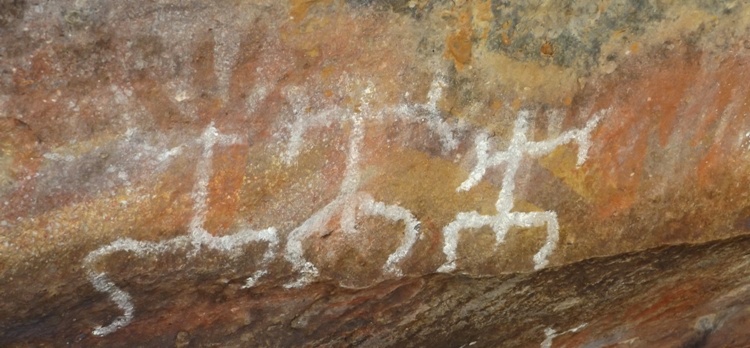
We have previously been on the southern side of the river (pre-dating digital photography) and found it a good unsealed dry weather only road, with occasional views and places to stop and see the Darling River, including the tiny river towns of Louth and Tilpa.
This time we decided to take the northern side of the river. To remain fully on the northern side includes travelling through the Toorale National Park, and not meeting the Darling River until Louth.
This 63,902 hectare park was established in 1996, incorporating the former sheep stations of Ben Lomond and Belah, with Mulgowan added
in 2002.
Redbank Homestead which has cottage accommodation and Yanda campground are both on the edge of the Darling River,
as 25,430 hectares of Yanda station was acquired and protected as the Gundabooka State Conservation Area in 2005. The
two areas are managed as one park.
Gundabooka is of great significance to the local Ngemba and Baarkandji poeple. Where possible Aboriginal heritage has been protected.
Through most of the national park and adjoining conservation park
fences and buildings still remain. Those in good repair have been renovated, with those not being sound removed. Some
housing has been retained as staff accommodation. We passed a cottage fenced of and marked private on Yanda Track.
The
horse-shoe shaped Gunderbooka range with the prominent Mount Gunderbooka are in the southern section of the park.
The
Gundabooka area also has an association with the history of bushranging. In 1868 a bushranger called Captain Starlight was captured
in a cave on the range. This event has considerable historic interest.
The 30,866 hectare Toorale National Park encompasses the junction of the Darling and Warrego rivers. Toorale Station was purchased
to become a National Park in 2008. Toorale Station was once part of the world’s largest sheep station. After the rains,
the vast Warrego floodplain springs to life, and the wetlands have an abundance of birdlife. There is a walk trail around the
former homestead and outbuildings, but the interiors can only be seen on a guided tour conducted by NSW Parks and Wildlife.
There is a campground beside Darling River.
However we choose to take the southern route at first, which follows
the Darling River, to visit Gundabooka National Park.
Older remnant vehicles were rusting into the ground.
Leaving our caravan at the Yanda campground we travelled south on the Yanda Track (above). There were numerous dry dams (earth
tanks on the map). At Five Mile Tank there was a small old corrugated iron cottage, with a low levy bank all around it, appearing
to guard against floodwaters (below left). Some remnants remain in the cottage (below right).
Darling River at Yanda. A short walk down from the levelled camping and day area goes to the edge of the Darling River, which below Bourke Weir was very low. Darling river near Yanda campground looking downstream below left and upstream below right.
Feral animal control is an important part of park management, to enable native species to recover and thrive, and not prevent further
denuding of land from overgrazing such as by feral rabbits and goats. Boundary fences are being retained and maintained to help
keep out feral animals. One earth tank had a dog fence around it, either to maintain the water for staff dwelling use or possibly
used to trap feral dogs and foxes.
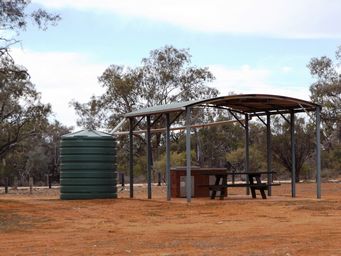
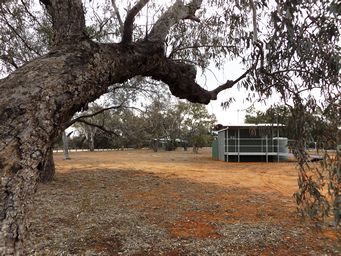
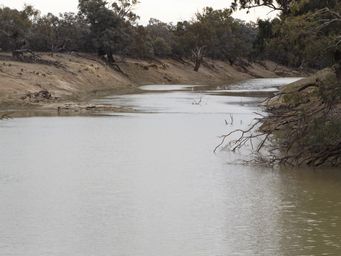
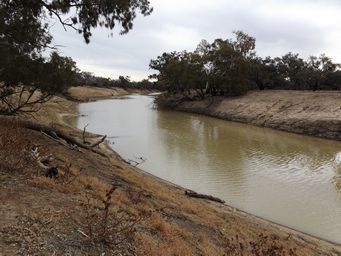
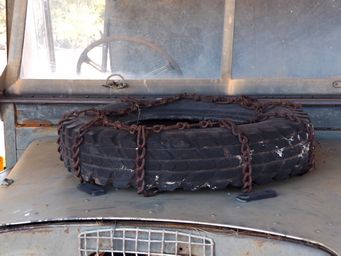
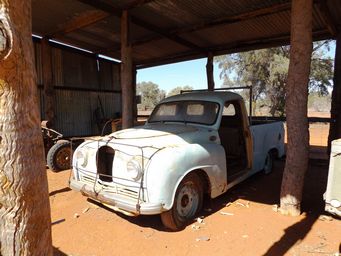
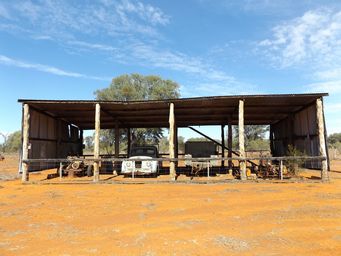
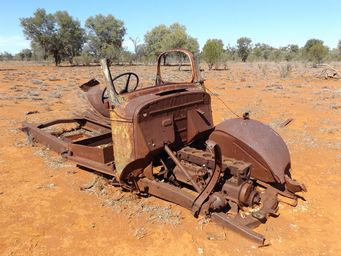
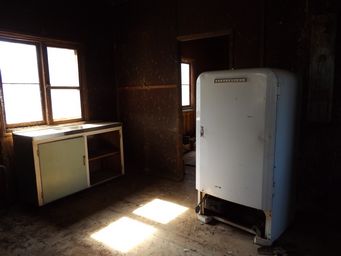
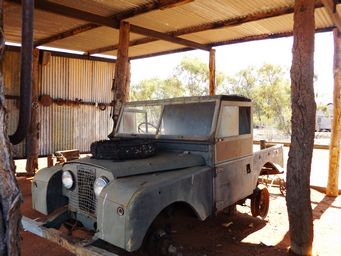
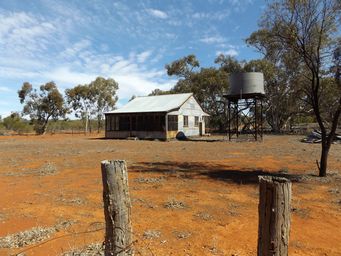
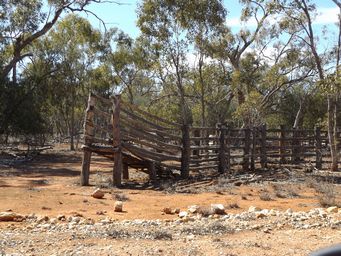
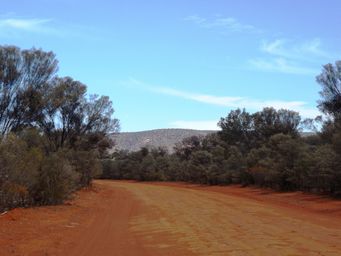
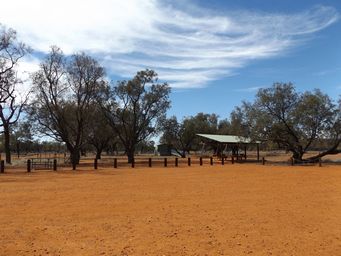
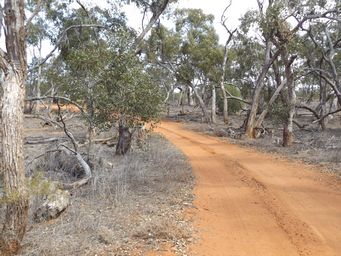
Update: Due to Covid restrictions, since June 2020, all national parks camping must be booked, online via NSW National Parks or
by phone on 1300 072 757. A $6 booking fee applies to all bookings, even for campgrounds that do not charge a camping
fee.